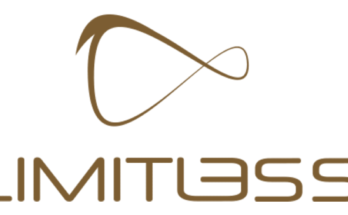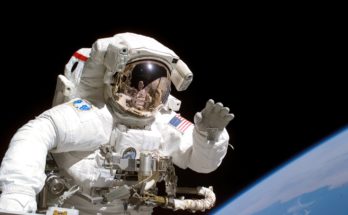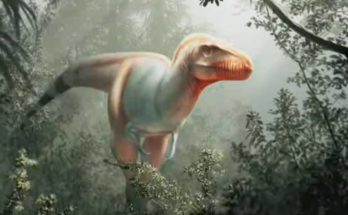A commercial Dragon supply tanker fabricated and claimed by SpaceX soared into a reasonable blue sky over Florida’s Space Coast Thursday with a zoological display of research trials and holiday shocks heading for the International Space Station.
Researchers stacked 40 genetically-built into the Dragon container to help check the viability of an exploratory medication to battle muscle and bone decay. There’s likewise a test supported by Anheuser-Busch to think about the malting of grain in microgravity, which could prompt the fermenting of brew in space, the company says.
An combustion trial to be conveyed to the station will manage research into the conduct of flares in restricted spaces in microgravity. NASA and business groups have revealed seven CubeSats stowed inside the Dragon shuttle for organization in circle, including the first nanosatellite worked in Mexico to travel to the space station.
Furthermore, there are a couple of occasion treats coming up for the space station’s six-man group.
“As far as presents and so forth, I’m not sure I want to divulge anything, but I think I would tell you that Santa’s sleigh is certified for the vacuum of space,” kidded Kenny Todd, supervisor of room station activities and coordination at NASA’s Johnson Space Center in Houston.
Crammed full with 5,769 pounds (2,617 kilograms) of gear, the computerized payload tanker launched from cushion 40 at Cape Canaveral Air Force Station at 12:29:24 p.m. EST (1729:24 GMT) Thursday to commence a three-day trek to the space station.
The 213-foot-tall (65-meter) Falcon 9 launcher touched off nine Merlin 1D primary motors to climb away from cushion 40 with 1.7 million pounds of window-shaking push. A reasonable harvest time evening sky welcomed the lamp oil energized Falcon 9 as it diverted upper east from Cape Canaveral to adjust its flight way to the space station’s circle.
The departure happened a day delayed after outrageous high-height winds kept the Falcon 9 from launching Wednesday. Be that as it may, the upper level breezes died down enough Thursday to allow the Falcon 9’s red hot takeoff, and the business launcher effectively conveyed its Dragon freight payload into a primer circle eight-and-a-half minutes after the fact.
The Falcon 9’s first stage did the primary piece of lifting before disconnecting more than two minutes into the flight. The primary stage supporter flew itself back through Earth’s climate and arrived on SpaceX’s automaton deliver “Of Course I Still Love” stopped in the Atlantic Ocean east-upper east of Jacksonville, Florida, denoting the 46th time SpaceX has recuperated one of its sponsors flawless for reuse on a future flight.
The principal organize flown on Thursday strategic its first outing to space and back.
In the interim, the Falcon 9’s subsequent stage lit its single Merlin motor to infuse the Dragon supply deliver into space. A moment later, the payload case conveyed from the second phase of the Falcon 9, and a forward-mounted camera indicated the Dragon taking off from the rocket against the inky blackness of room.
SpaceX affirmed the stock ship expanded its capacity producing sun oriented panels to a range of 54 feet (16.5 meters), and the entirety of the ship’s Draco moving engines were prepared to start a progression of moves to meet with the space station early Sunday.
Subsequent to releasing the Dragon shuttle, the Falcon 9 rocket’s upper stage was required to proceed on an all-inclusive term coast enduring about six hours. SpaceX proposed to gather warm information and other data on the exhibition of the phase during a few circles of the Earth, before the Merlin motor reignites for a long transfer consume to drive the rocket body once more into Earth’s environment for a ruinous reemergence over the far southern Indian Ocean.
SpaceX said the long-length try is important to check the upper stage’s availability to help future missions that may require the rocket to drift in the extraordinary condition of room for as long as six hours. Missions that necessitate that capacity incorporate high-height orbital infusions for U.S. military and National Reconnaissance Office satellites.
The extended flight of the upper stage was required to take up a portion of the Falcon 9’s abundance fuel limit, leaving deficient charge in the principal stage to enable the sponsor to come back to an arrival at Cape Canaveral. Rather, SpaceX handled the rocket at sea.

The launch of SpaceX’s Falcon 9 rocket makes room for two other significant spaceflight exercises on inverse sides of the world.
At Cape Canaveral, United Launch Alliance is preparing an Atlas 5 rocket for a 11-hour mock commencement Friday to practice techniques for the principal dispatch of Boeing’s Starliner team case in the not so distant future. The commencement exercise will incorporate filling of the Atlas 5 with fluid forces at Cape Canaveral’s Complex 41 platform, somewhat more than a mile away from SpaceX’s Falcon 9 dispatch office at pad 40.
The Atlas 5’s training commencement at cushion 41 couldn’t proceed a similar day as SpaceX’s launch from the neighboring cushion.
Russian groups in Kazakhstan intend to launch a Soyuz sponsor at 4:34 a.m. EST (0934 GMT) Friday with a Progress resupply and refueling tanker. The Progress payload crucial planned to dock with the space station early Monday, around 24 hours after the appearance of SpaceX’s Dragon spacecraft.
Italian space traveler Luca Parmitano and NASA flight engineer Drew Morgan will man the space station’s Canadian-manufactured robot arm to catch the Dragon supply deliver Sunday. The mechanical arm will situate the Dragon shuttle on the station’s Harmony module, where space travelers will open incubates and start unloading the payload inside the stock ship’s interior compartment.
The Dragon cargo capsule launched Thursday is making its third journey to the space station, following two past full circle flights in 2014 and 2017. This crucial SpaceX’s nineteenth resupply trip to the station under a multibillion-dollar contract with NASA.
Here is a separate of the Dragon rocket’s 5,769-pound (2,617-kilogram) supply load. The figures underneath do exclude the mass of freight bundling, which is remembered for NASA’s general payload mass:
Science Investigations: 2,154 pounds (977 kilograms)
Vehicle Hardware: 675 pounds (306 kilograms)
Team Supplies: 564 pounds (256 kilograms)
Spacewalk Equipment: 141 pounds (65 kilograms)
Computer Resources: 33 pounds (15 kilograms)
Unpressurized Payloads: 2,037 pounds (924 kilograms)
Eight of the 40 mice launched toward the space station Thursday have been genetically-designed to need myostatin, a protein that demonstrations to constrain muscle development in creatures. The muscle-bound, without myostatin mice — or “mighty mice” — are joined by four different gatherings of rodents, including bunches that will be given a trial sedate in space to square myostatin action and advance muscle development.
Each of the 40 mice will profit to Earth alive for the Dragon case toward the beginning of January. Researchers will manage the equivalent myostatin protein blocker to a portion of the mice after they are back on the ground to survey how the medication influences their pace of recuperation.
“The focus of this project is going to be to determine whether getting rid of myostatin in mice that we send to the International Space Station can prevent, or at least mitigate, the loss of muscle due to microgravity,” said Se-Jin Lee, teacher at the Jackson Laboratory and University of Connecticut School of Medicine, and head examiner for the rat explore analyze.
The medication preliminary to be controlled to the mice on the space station likewise represses activin, a protein that manages bone mass.
“By blocking activin with this drug, bone density increases significantly,” said Emily Germain-Lee, a co-specialist on the investigation and educator at University of Connecticut School of Medicine. “And as you probably know, astronauts who spend a lot of time in space lose not only muscle mass, but also bone mass.
“Anything that can be done to prevent muscle and bone loss would be very important to maintaining the health of astronauts during space travel,” Germain-Lee said. “But … loss of bone mass is also a huge health problem for people here on Earth. There are actually lots of diseases that lead to bone loss in both children and adults. And, of course, osteoporosis is a big health issue for people who are elderly or bedridden.
“By testing this experimental drug in life subjected to microgravity, we hope to be able to test the therapeutic strategies for combating both the bone loss and muscle loss that occur in lots of different conditions,” Germain-Lee said.
Gary Hanning, executive of worldwide grain inquire about at Anheuser-Busch, said the organization’s malting test on board the Dragon freight strategic the third in a progression of investigations taking a gander at how the earth of room influences fermenting forms.
“This series has been constructed to look at the impact of space environment on the germination process of barley,” Hanning said. “So the germination processes is taking seed and creating the new plant from that, and so that’s a very key step in the life cycle of any plant, and particularly important to malting barley. So much of our research on earth is focused on seed germination and the environmental impacts that would affect seed germination, as well as physiological effects.”
Hanning said Anheuser-Busch’s trials in space have given the company’s examination group another viewpoint.
“From our previous studies on the space station, we’ve noted that the gene expression — that’s the genes that are turned on or turned off and to what degree — are different on the space station then they are on Earth,” he said. “We think it’s a response to the stress, because it’s an abnormal environment, so there’s a stress related there. So gene expression is a part of that cascade of events as part of germination.”
The examination launching on SpaceX’s next load crucial take a gander at equipment answers for help grain malting on the space station.
“Malting is basically a biological process,” Hanning said. “It is to convert barley into a product called malt, which is used in a lot of food and beverage applications. Malting is actually a three-step process,” he included, starting with the soaking, or hydration, of grain grains, trailed by germination and drying.
The Anheuser-Busch explore propelled with simply 2.5 ounces (70 grams) of grain grains, isolated into two units.
Another research payload on board the Dragon rocket will enable researchers to watch fire conduct in bound spaces in microgravity. The burning bundle incorporates strong fuel tests that will be touched off inside a defensive fenced in area on the space station.
“We want to study how solid materials burn in different confined conditions, and how fire interacts with its immediate surroundings,” said Ya-Ting Liao, an educator of mechanical and advanced plane design at Case Western Reserve University.
“It turns out this is a very hands-on experiment,” said Paul Ferkul, an examiner on the kept ignition analyze. “We’re talking with the astronaut, we’re interacting with him, we’re telling him what to do, how to set the parameters. And he, in turn, tells us how it’s looking, what he’s experiencing, and the astronauts are very glad to do this.
“It’s way outside their usual routine on the space station, so that helps us a lot because they’re enthusiastic for our work, and they make very good investigators because of that.”
The Dragon capsule’s outer payload narrows is stacked with a Japanese Earth-imaging instrument with high unearthly affectability. The Hyperspectral Imager Suite, or HISUI, instrument will picture Earth’s surface in 185 phantom groups, enabling researchers to recognize the sythesis and sort of a scope of vegetation, soil, rocks, day off, and human-made articles like structures, streets and different structures.
Utilizing the mechanical arm, the HISUI instrument will be mounted to an apparatus outside the station’s Japanese Kibo lab module. It’s a follow-up to the Japanese-created ASTER instrument on NASA’s Terra satellite, which launched in 1999.
Another lithium-particle battery for the space station’s sun oriented exhibit support is additionally stowed inside the Dragon case’s unpressurized trunk. It will supplant a battery traveled to the station by a Japanese HTV payload dispatch a year ago.
That battery was harmed by an electrical short not long after it was introduced on a spacewalk.
Other gear scheduled for conveyance to the space station incorporate an automated instrument stowage stage to store spill identifiers outside the space station, and moves up to enable researchers to make unobtrusive estimations of gravity utilizing the Cold Atom Laboratory, an exploration office inside the orbiting lab.
With the Dragon payload jump start off the beaten path, SpaceX is preparing for its next Falcon 9 flight in mid-December from pad 40 at Cape Canaveral.
A Falcon 9 rocket — without its payload — was seen moving from SpaceX’s shelter at cushion 39A to close by cushion 40 Thursday evening, a few hours after the past Falcon 9 crucial off. The Falcon 9 seemed to highlight a formerly flown first stage sponsor, with another subsequent stage connected to it.
The rocket moved Thursday evening to cushion 40 is likely relegated to launch the JCSAT 18/Kacific 1 interchanges satellite, a Boeing-manufactured specialty intended to transfer broadband flag over the Asia-Pacific locale.
The launch of the JCSAT 18/Kacific 1 interchanges satellite was planned for no sooner than Dec. 15 after a strangely quick turnaround following the CRS-19 payload launch to the space station. It was not quickly certain whether the one-day slip in the CRS-19 launch this week may correspondingly postpone the JCSAT 18/Kacific 1 launch .
Disclaimer: The views, suggestions, and opinions expressed here are the sole responsibility of the experts. No Just Examiner journalist was involved in the writing and production of this article.




